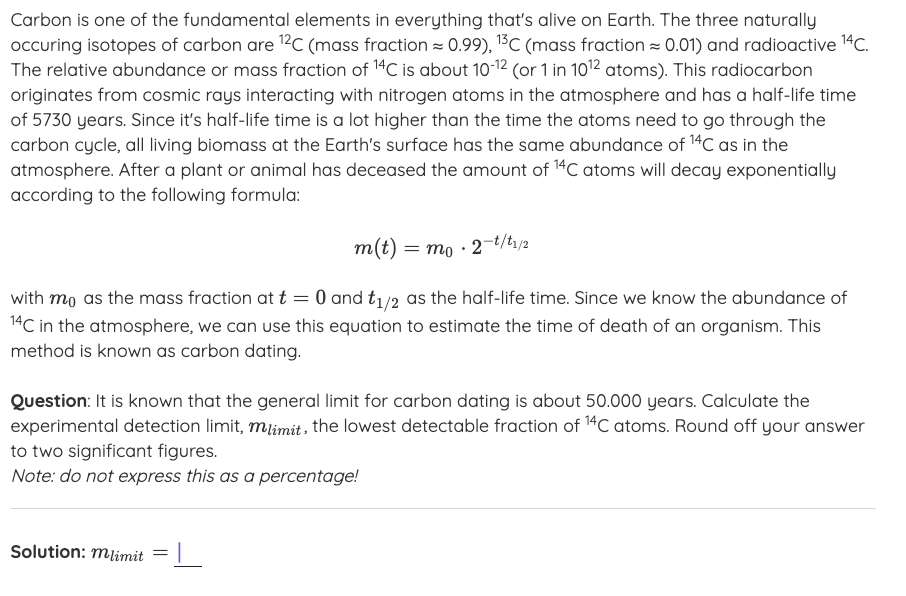Carbon is one of the fundamental elements in everything that's alive on Earth. The three naturally occuring isotopes of carbon are 12C (mass fraction = 0.99), 1BC (mass fraction = 0.01) and radioactive 14C. The relative abundance or mass fraction of 14C is about 10-12 (or 1 in 1012 atoms). This radiocarbon originates from cosmic rays interacting with nitrogen atoms in the atmosphere and has a half-life time of 5730 years. Since it's half-life time is a lot higher than the time the atoms need to go through the carbon cycle, all living biomass at the Earth's surface has the same abundance of 14C as in the atmosphere. After a plant or animal has deceased the amount of 14C atoms will decay exponentially according to the following formula: m(t) · 2-t/t1/2 = mo with mo as the mass fraction at t = 0 and t1/2 as the half-life time. Since we know the abundance of 14C in the atmosphere, we can use this equation to estimate the time of death of an organism. This method is known as carbon dating. Question: It is known that the general limit for carbon dating is about 50.000 years. Calculate the experimental detection limit, mlimit , the lowest detectable fraction of 14C atoms. Round off your answer to two significant figures. Note: do not express this as a percentage! Solution: mįlimit
Radioactive decay
The emission of energy to produce ionizing radiation is known as radioactive decay. Alpha, beta particles, and gamma rays are examples of ionizing radiation that could be released. Radioactive decay happens in radionuclides, which are imbalanced atoms. This periodic table's elements come in a variety of shapes and sizes. Several of these kinds are stable like nitrogen-14, hydrogen-2, and potassium-40, whereas others are not like uranium-238. In nature, one of the most stable phases of an element is usually the most prevalent. Every element, meanwhile, has an unstable state. Unstable variants are radioactive and release ionizing radiation. Certain elements, including uranium, have no stable forms and are constantly radioactive. Radionuclides are elements that release ionizing radiation.
Artificial Radioactivity
The radioactivity can be simply referred to as particle emission from nuclei due to the nuclear instability. There are different types of radiation such as alpha, beta and gamma radiation. Along with these there are different types of decay as well.


Step by step
Solved in 2 steps









